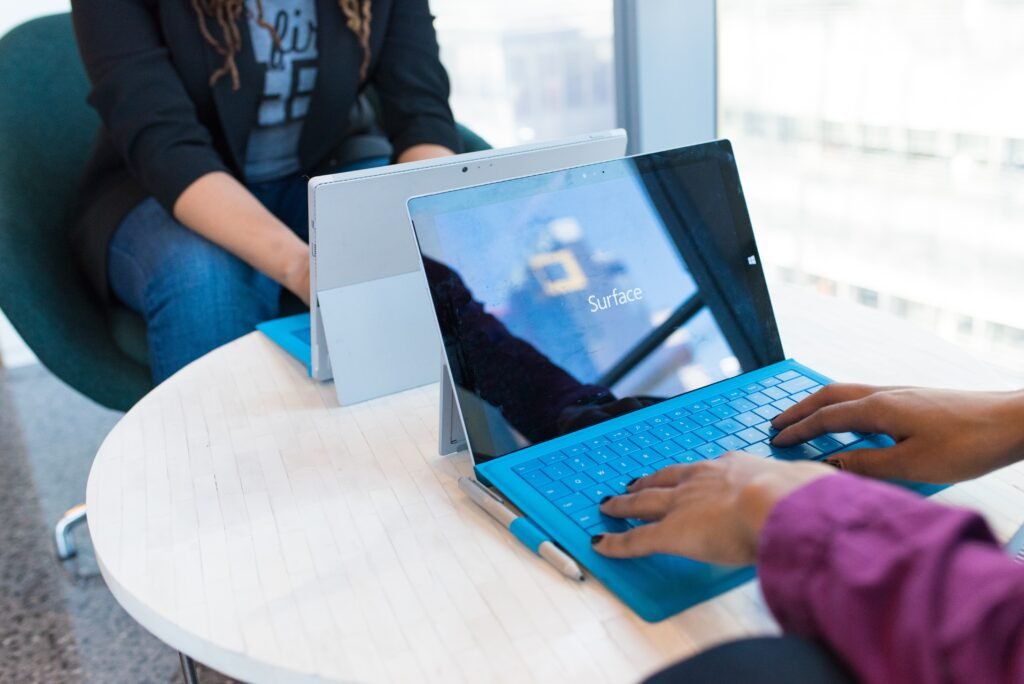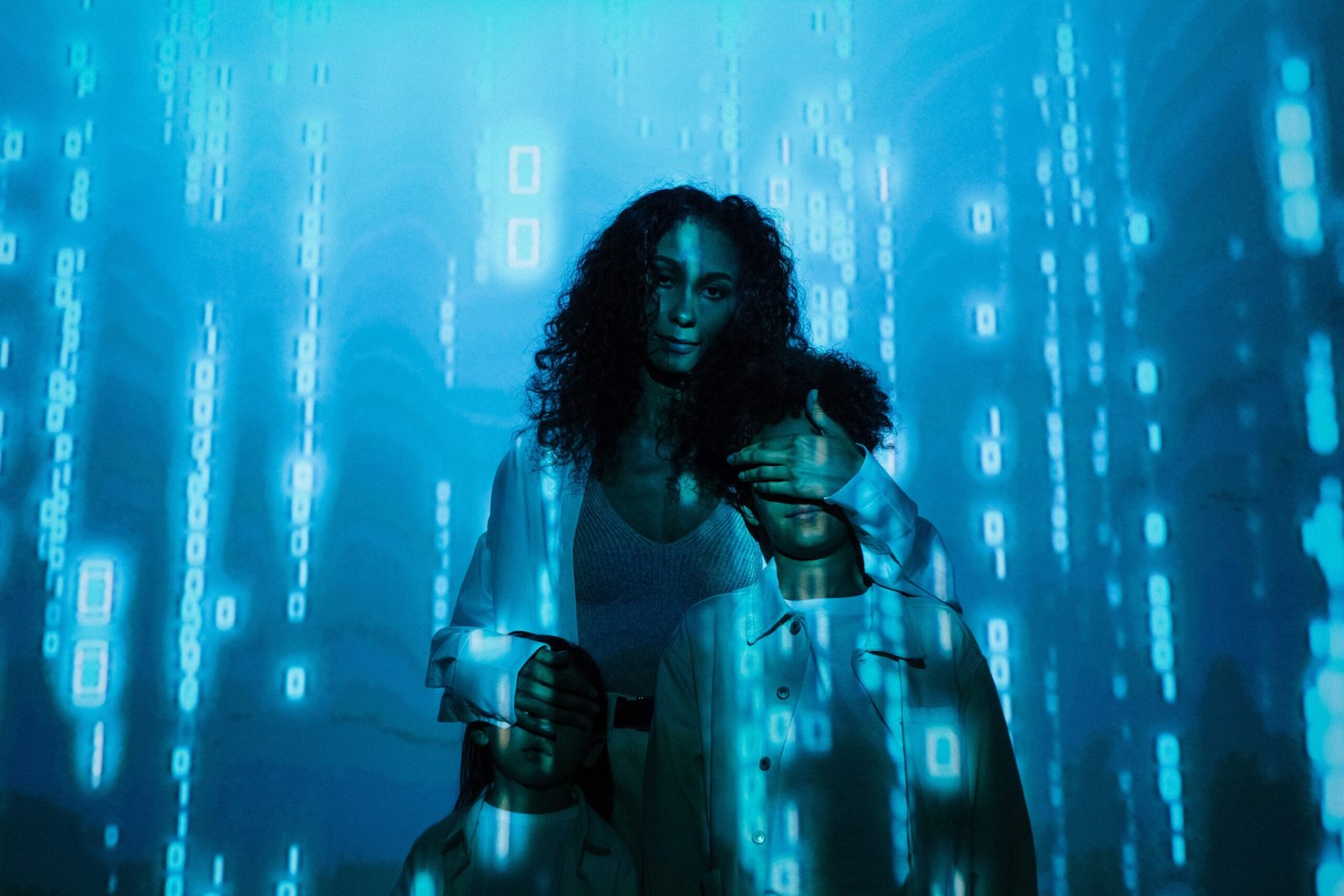You’re probably reading this on a device that emits blue light. Should you be concerned about the blue light flooding into your eyes now that people are spending more time in front of devices than ever before?

Here’s an overview of blue light, including what it is and how it might harm — or improve — your health.
What exactly is blue light?
Electromagnetic energy is surging across the universe. It flows in waves around and even through us.
The length of the waves varies, with the longest being:
- radio frequencies
- microwaves
- infrared
- UV (ultraviolet) waves
The electromagnetic spectrums of the following are among the shortest:
- X-rays
- Gamma radiation
The vast majority of electromagnetic waves are imperceptible. However, the human eye can detect a narrow band of waves known as visible light. The wavelengths of visible light range in length from 380 nanometers (violet light) to 700 nanometers (white light) (red light).

Blue light wavelength
The more energy a wave transfers, the longer it is. Blue light consists of very brief, high-energy waves.
They are, in reality, only slightly longer and less intense than UV waves, which are too short to be seen with the human eye. UV rays have been linked to skin and eye damage, according to health experts.
Blue light waves with high energy are nearly as powerful.
What causes blue light?
Blue light, like other colors of visible light, is everywhere around you. The sun emits blue light. So do fluorescent and incandescent light bulbs. Because to the growing use of light-emitting diode (LED) technology, people are being exposed to more blue light than ever before.
Computer and laptop screens, flat-screen televisions, cell phones, and tablets all use LED technologies that emit a lot of blue light.
What effect does blue light have on your eyes?
Your eye has structures that shield it from some types of light. Your cornea and lens, for example, shield the light-sensitive retina at the rear of your eye from harmful UV rays.
Blue light is not blocked by those structures. And you’re exposed to a lot of it – the amount of blue light emitted by the sun significantly outnumbers that emitted by any single device.
Nonetheless, some eye doctors have expressed concern about blue light exposure from backlit digital screens and devices. This is due to the fact that people spend so much time using them at such close range.
During COVID-19 lockdowns, for example, 32.4 percent of the sample population used a blue-light-emitting device 9 to 11 hours per day, according to a 2020 study published in the Indian Journal of Ophthalmology. Another 15.5 percent utilized the devices 12 to 14 hours each day, representing a significant increase in screen time, most likely due to changes in how individuals worked during the pandemic.
So far, research appears to refute the claim regarding blue light eye damage. While some animal studies have revealed that blue light can damage retinal cells, eye specialists believe there is little evidence that blue light hurts the human retina.
One recent exception: doctors reported that after using an LED face mask to treat her complexion, a woman developed impaired vision and a retinal lesion. However, it’s difficult to say whether the damage was caused by blue light, red light, or infrared light because the face mask contained all three.
Researchers point out that because LED devices are new, there haven’t been any long-term tests to see what blue light does to your eyes over time.
Blue light exposure risks and negative effects
While current research indicates that blue light from computer screens and mobile devices is unlikely to be harmful to your eyes, there are a few other factors to consider.
Here’s a quick rundown of the hazards and advantages of blue light waves.
1. Macular degeneration and blue light
According to the American Academy of Ophthalmology, age-related macular degeneration (AMD) is the leading cause of vision loss in persons over the age of 50. (AAO). It occurs as you age when the macula, a region in the back of your eye, becomes damaged.
As a result, you no longer have the capacity to view the center of your field of vision. You might still be able to glimpse stuff on the outskirts. However, details and objects in the center of your sight lines may become hazy and difficult to see with time.
Animal and laboratory research have raised concerns about whether blue light could hasten the progression of macular degeneration. Nonetheless, eye doctors and experts believe there is no conclusive link between using LED or blue-light-emitting devices and AMD.
Similarly, a 2018 scientific review concluded that there was no evidence that blue-light-blocking lenses reduced the likelihood of someone who underwent cataract surgery developing macular degeneration later in life.
2. Digital eyestrain with blue light
Using digital devices up close or for extended periods of time might cause digital eyestrain.
According to studies, persons who use computers, laptops, and other digital devices blink less frequently than usual. Fewer blinks may indicate less wetness.
Digital eyestrain means different things to different people, but it is often associated with the eye’s focusing system.
When your eyes are tired from staring at a blue-light-emitting screen, you may see the following:
- eyes that are parched
- eyes that are painful or irritating
- fatigued eyes
- headaches
- Squinting causes face muscle exhaustion.
Most visible light scatters more easily than blue light. When exposed to blue light, this may make it difficult for your eyes to focus. Instead, blue light may be digested by your eye as poorly focused visual static. This decrease in contrast may make blue light processing more challenging for your eyes, potentially contributing to eyestrain.
However, there hasn’t been much research to confirm that blue light causes eyestrain. More high-quality research is required.
3. Sleep and blue light
While the jury is still out on blue light’s long-term impact on human eye health, there is more agreement on how blue light affects your sleep-wake cycle.
Light sensors in your eyes and skin can distinguish between the powerful blue light waves of brilliant daylight and the warmer, redder tones that indicate the end of the day. When the light around you fades into those sunset hues, the sensors in your eyes signal your body to release melatonin, the sleep-inducing hormone.
A small 2015 study discovered that when people are exposed to blue light in the evening, their bodies produce less melatonin and their sleep cycles are delayed or interrupted.
When blue light disrupts your sleep patterns, other issues can arise, according to a 2019 review:
- a higher risk of hormone-related malignancies such as breast and prostate cancer
- reduced levels of leptin, a hormone that indicates satiety after eating
- metabolic alterations, particularly blood sugar levels
Blue light has health benefits.
Blue light exposure has various key health benefits. It can:
- assist you in remaining alert
- improve your memory and cognitive function
- perhaps alleviate seasonal sadness
- aid in the treatment of some skin diseases
1. Assist you in remaining vigilant
A modest 2018 study found that blue light can improve reaction time and attentiveness when you’re not at your best performance time of day.
2. Improve your memory and cognitive function.
Following a 30-minute blue light “washout” period, participants in a small 2017 study performed better on verbal memory and memory consolidation tasks. Participants in the study who experienced an amber light “washout” performed worse.
3. Possibly alleviate seasonal depression
Blue light therapy is becoming one of the most often used therapies for seasonal depression. Researchers discovered that it is also an excellent treatment for non-seasonal depression, especially when paired with antidepressant medicines.
4. Acne treatment
According to a 2015 study, blue light destroys acne-causing bacteria and reduces inflammation in acne breakouts. One thing to keep in mind: If you’re going to experiment with at-home blue light gadgets, make sure they’re FDA-approved (FDA).
5. Assist in the treatment of some skin disorders
Actinic keratosis and plaque psoriasis were both improved by blue light treatment in a 2017 case study and 2018 review. According to a 2018 study, blue light treatment is also beneficial in treating basal cell carcinoma tumors.
How to Reduce Exposure to Blue Light
To reduce digital eyestrain, the AAO suggests the following steps.
1. Use the 20/20/20 method.
Stop every 20 minutes while using a device that emits blue light to focus on items that are around 20 feet distant. Examine those objects for 20 seconds before returning to your up-close examination.
2. Keep your eyes moisturized.
Artificial tears, eye drops, and room humidifiers are all helpful ways to keep your eyes from becoming too dry and irritated while using blue-light-emitting devices.
3. Wear eyeglasses with the correct prescription.
Squinting at screens for extended periods of time is not good for your eyes’ overall health. If you wear prescription glasses to correct your vision, be sure they are designed for the distance between your eyes and your screen – ideally an arm’s length away. The majority of glasses are designed for greater distances.
4. Change the blue light on your computer screen.
To reduce the risk of eyestrain and sleep disruption, put your screens to “night shift” mode with warmer tones. You can also buy blue-light-filtering screens to put over your computer screen when working late at night. The filter may reduce the glare on your screen.
According to 2020 research, they filter 30 to 60% of blue light, yet it’s unclear whether limiting blue light will assist preserve the sleep-wake cycle for those who use backlit displays before bedtime.
5. Leave the blue-blocking spectacles at home.
Blue-blocking glasses have been demonstrated in studies to be effective in reducing blue light, but the AAO does not suggest them to protect your eyes because there isn’t enough proof that they reduce eyestrain or improve eye health.
Conclusion
Blue light is a type of natural electromagnetic radiation. The sun provides the majority of your blue light exposure, but some health professionals are concerned that artificial blue light may be harmful to your eyes.
Blue light has been proven in several studies to harm cells in laboratory animals. So far, there hasn’t been much study to suggest that blue light from digital devices and LED screens harms human eyes.
Prolonged use of digital devices, on the other hand, causes digital eyestrain, so it’s a good idea to take frequent breaks if school or work requires hours of screen time.
Because blue light can disrupt your body’s innate resting and waking cycles, you should avoid using your devices before night or switch to an amber-light setting.
Read Also
- 10 Ways to Get Your Children to Sleep
- 10 Natural Ways to Improve Your Sleep
- How to Cure Sleep Disorders
- Bad Effects of Sleep Apnea on Body
- Top 10 Reasons to Sleep More
- 5 Stages of Your Normal Sleep Cycle
- Best Time to Sleep and Wake Up
- Healthy Sleep – Tips and Tricks
- How Much Sleep Do You Really Require?
Reference
- Research progress about the effect and prevention of blue …
- How Blue Light Can Affect Your Health – WebMD
- Blue Light and Your Eyes – Prevent Blindness

